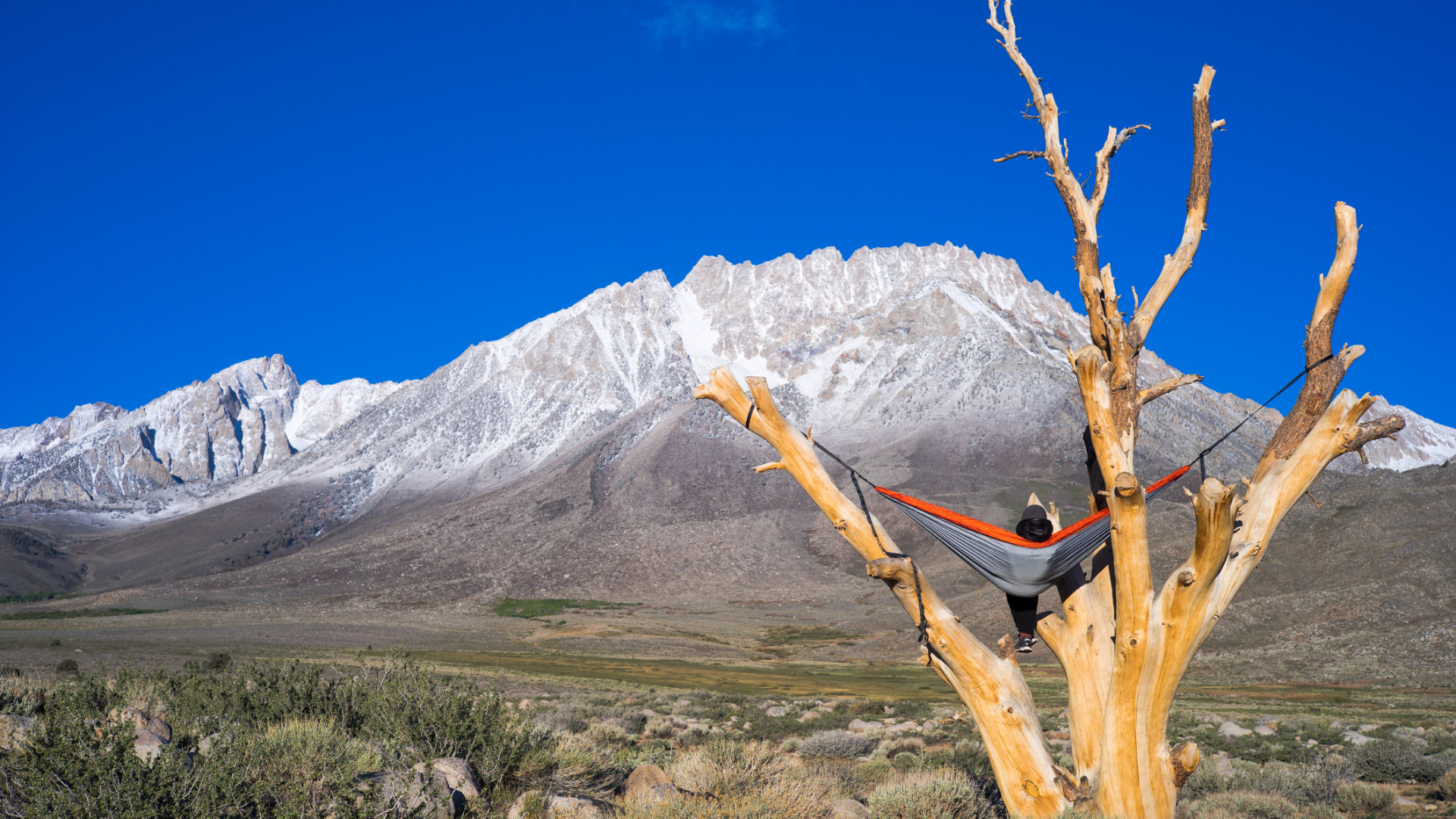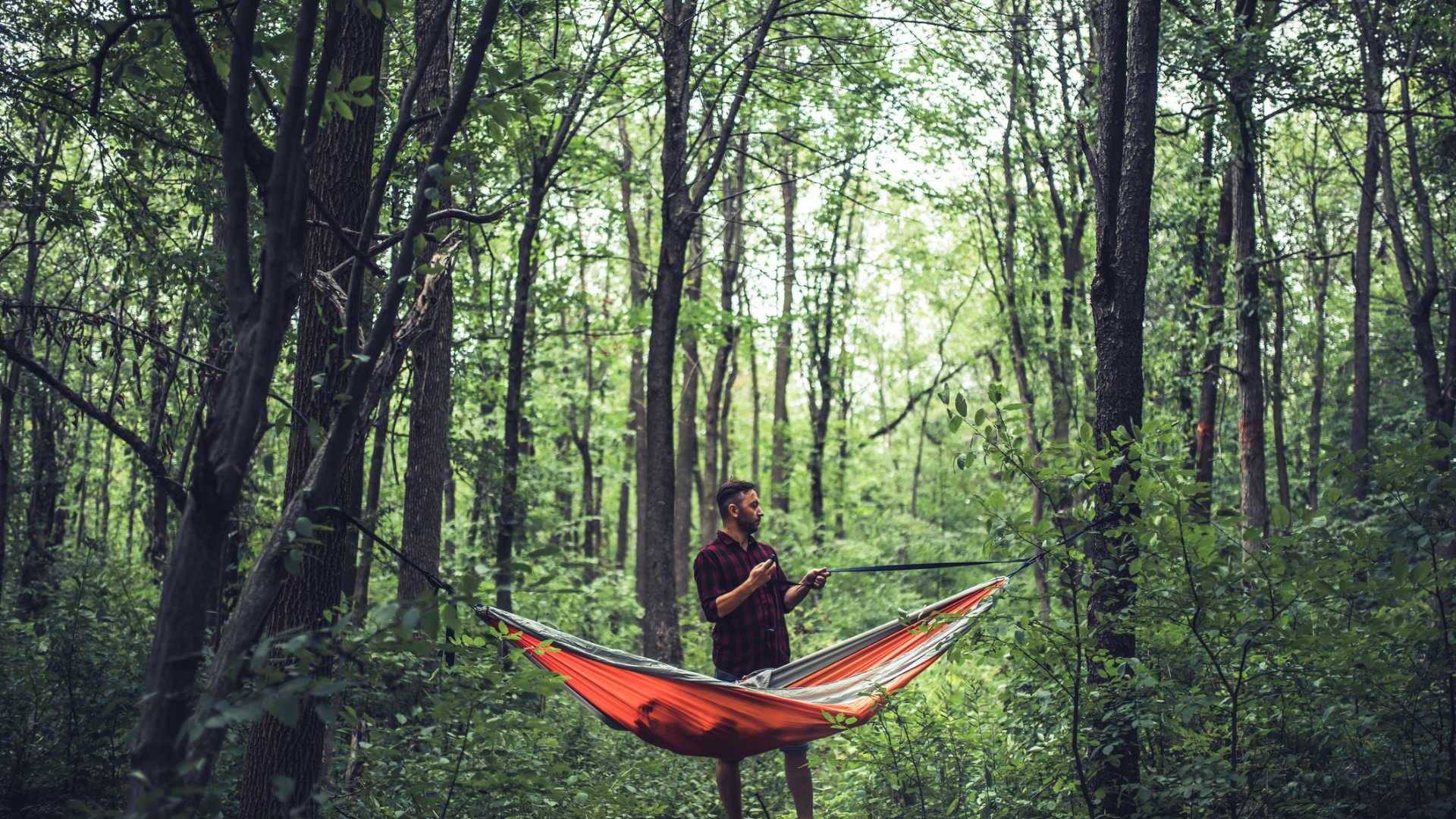Why sleep in a hammock? A celebration of a comfortable, lightweight alternative to a tent
A night in a hammock always feels like an adventure – but what it’s like to sleep out in a hammock?

A good night’s sleep is key to enjoying an outdoor experience, and for many adventures hammock camping can provide real comfort in all weathers. Equally a night in a poorly set up hammock can be – no, will be – miserable. Success depends on more than just buying the best hammock and finding two trees to sling it between. For versatility, ease of use, speed of deployment and to ensure the kind of shut-eye that ground sleepers can only envy, you need the right kit and accessories, plus well-practised skills. Is it worth learning those skills? Absolutely.
Anyone who’s travelled in South and Central America, parts of Asia, or just lounged around on tropical beaches will have already done some hammock swinging and know how comfortable they can be. In hot and humid places, and especially in jungles, hammocks are the smart technology for raising yourself in the air, so you’re not sharing your bed with snakes, scorpions and spiders. They’re cooler, as well, and being held aloft in a soft cradle of netting or fabric is luxury compared to a night on the hard earth. It’s not just us humans who appreciate a night swinging in the trees, either. All of the great apes, our cousins, weave ‘hammocks’ out of pliant branches to sleep on, high off the ground.
Hammock camping
Compared to the hot climate, jungle version, modern hammock camping in temperate weathers and through all the seasons is a relatively new and more complex activity. Hammock sleeping has had a big following across North America for some time, where it’s often the lightweight choice for long-distance trail walking, backwoods trips, or for getting above the snow in winter camping. That interest has led to more hammock manufacturers, new design innovations, arsenals of accessories, and above all, an expansion in skills and techniques, all of which are now spreading across the globe as growing numbers of people in other regions try hammock camping for themselves.
Despite its many attractions and practicalities, don’t think of hammock camping as an either/or thing, but rather as something new to add to your existing quiver of sleeping kit and techniques. You might well already have a shelf with a lightweight tent, a bivvy bag or a tarp to choose from depending on your plans for a trip. Add a hammock system to those options and you’ve massively increased your versatility, opportunities for fun and the chance to learn more outdoor skills.
Sleep almost anywhere, any time

I’ve used hammocks for multi-day walking, cycling and horse trips for over 20 years and in places as far apart as Patagonia, Spain and Iran. For many trips nowadays, a hammock would be my first pick if the terrain and landscape was right. And outside of high mountains, featureless plains and the like, many landscapes provide all you need to swing your hammock.
For a midwinter, 500-mile walk between Munich and Paris I slept out every night in snow, rain and gales using a home-sewn light-weight hammock, a foam mat, a very inadequate 2-season sleeping bag and a poncho-tarp. Given my need to travel light across Europe’s forests, high ground and farmland it was a smart choice, ensuring reasonable nights sleep off the damp ground. Sites I was able to use included slopes far too steep to have bivvies on, inside hay barns and, once, suspended over six inches of water in a marshy wood.
Getting started
If you haven’t used hammocks before and don't know how to use a hammock, what do you need? Start with something simple – it’ll be cheap, more than adequate for many trips and it’s a great way to learn key techniques. Avoid tropical-style netting or heavy fabric garden hammocks; to sleep out comfortably you need a lightweight fabric skin and a proper attachment system using ropes and knots or webbing and clips.
All the latest inspiration, tips and guides to help you plan your next Advnture!
You’ll also need a foam or inflatable mat to lie on in the hammock; you lose most body heat where your weight presses against the hammock skin and moving air under the hammock will chill you like a fridge if you’re not properly insulated. For winter camping, serious hammockers sling a loose, fluffed up quilt under the hammock to retain even more heat. You’ll also need a tarp big enough to sling over a ridge rope or guy out over the hammock, and in some seasons or geographical areas a bug net as well. All of this will usually amount to the same or less weight than a light tent system.
Sleeping in the air
Unlike having a siesta in a hammock on a beach, proper sleeping in a hammock requires practise in the ‘yoga’ moves of getting in and lying down. It’s one thing to lie back and arrange yourself for comfort when your legs and arms are free, but quite another to manage the same maneuver when you’re cocooned in heavy clothing, a sheet liner and the straitjacket of a sleeping bag. For that reason many experienced hammock sleepers prefer to use a camping quilt, which is easier to arrange over themselves once they’re lying flat. And you should be lying flat. A common mistake is to graunch a hammock up tight like a tightrope, and then to wonder why you’re trapped in a banana shape along its length. Instead the hammock should be left loose enough to allow you to sleep slightly diagonal to the axis which through some miracle of tension, surface geometry and gravity allows you to sleep flat in most positions, while held loosely but securely.
Experience and innovation

Improved designs have simplified some aspects of slinging and sleeping in a hammock, though usually with increased cost and complexity. Quick fix suspension systems can do away with the need to tie knots, zipped access can make it easier to get in and out, integral bug nets and tarps keep everything in place and some radical designs come close to suspended tents with greater space and comfort. But all hammocks still require skills to site and erect. Many of those skills are transferable from setting up tarps or selecting sheltered bivvy and tent pitching sites, whilst others – like spotting and assessing suitable trees or even possible supports – are specific to hammocks.
Experience with hammock camping allows you to push the parameters when it comes to the terrains, climates and seasons you’re able and happy to sleep out in. And it can be surprising how many things you can find to suspend a hammock from when you’re in treeless country. Deep in deserts I’ve slung mine from rock outcrops and between two vehicles, on Patagonian horse trips across flat plains there have been posts where two fences meet at right angle, and if there really is nothing upright then you can still use the hammock skin, and the mat and tarp to bivvy on the ground.
Top tips for new hammock campers
A few crucial points if you’re tempted to try hammock camping for the first time. Make sure that any hammock you buy is big enough for your height. Some manufacturers make different sizes; for the small extra weight and cost penalty, go for larger rather than smaller – especially if you’re tall. Remember that comfort comes from sleeping diagonally and you need to have enough length of fabric to make this possible, and ensure there’s enough room beyond your head and feet so you’re not squeezed where the ends are pulled in.
Practise suspending your hammock during the day to start with, and take a siesta to check you’ve got it up correctly and to get used to sleeping up in the air. Start on small overnight trips in easy terrain – established deciduous woodland is easy, or a stand of trees in open but sheltered countryside – until you’re confident you can safely sit and put up your whole system in a howling gale, driving rain and pitch darkness.
Remember, too, that there are a whole load of ancillary skills to go with hammock camping; those things you can do inside a tent or its vestibule on terra firma – like eating, cooking, route planning or storing kit – are all done differently when you’re off the ground. The ideal is to set your hammock up so, as well as being your bed, it’s at the right height to serve as a hanging chair, allowing you to get through camp chores using the space on the ground between your feet as table, while still sheltered by the tarp. But it all takes practice.
Get hammock camping right and I reckon you hit that sweet point between not-much-kit and very-comfortable. Lie back in your swinging bed, push back the tarp on a clear night and look up at the stars. It’s like having a bedroom with the roof off.
After a wild childhood in west Cork, Jasper Winn began embarking on long cycles, walks, horse journeys and kayak trips across five continents – adventures he’s decanted into books, magazine articles, radio and television documentaries. Keen on low-tech but good gear, Jasper is an advocate of slow adventures by paddle, pedal, saddle, boot and sail. He has circumnavigated Ireland by kayak and cycled across the Sahara. Twice. Having ridden north-to-south across Algeria he discovered the only way to get back was to turn round and pedal north again.

